Leaderboard
Popular Content
Showing content with the highest reputation on 09/26/2023 in all areas
-
Drinking brings out the best work in some people - Rudyard Kipling thought so. From Sea to Sea : Letters of Travel by Rudyard Kipling Publication date 1900 Talk to every one you meet, if they show the least disposition to talk to you, and you will gather, as I have done, a host of stories that will be of use to you hereafter. Unfortunately, they are not all fit for publication. When I tore myself away from the distractions of the outer world, and was just sitting down to write seriously on the Future of Japan, there entered a fascinating man, with heaps of money, who had collected Indian and Japanese curios all his life, and was now come to this country to get some old books which his collection lacked. Can you imagine a more pleasant life than his wanderings over the earth, with untold special knowledge to back each signature of his cheque-book? In five minutes he had carried me far away from the clattering, fidgety folk around, to a quiet world where men meditated for three weeks over a bronze, and scoured all Japan for a sword-guard designed by a great artist and — were horribly cheated in the end. 'Who is the best artist in Japan now ' I asked. 'He died in Tokio, last Friday, poor fellow, and there is no one to take his place. His name was K.., and as a general rule he could never be persuaded to work unless he was drunk. He did his best pictures when he was drunk.' 'Ému. Artists are never drunk.' 'Quite right. I'll show you a sword-guard that he designed. All the best artists out here do a lot of designing. K... used to fritter away his time on designs for old friends. Had he stuck to pictures he could have made twice as much. But he never turned out pot-boilers. When you go to Tokio, make it your business to get two little books of his called Drunken Sketches — pictures that he did when he was — ému. There is enough dash and go in them to fill half a dozen studios. An English artist studied under him for some time. But K...'s touch was not communicable, though he might have taught his pupil something about technique. Have you ever come across one of K...'s crows ? You could tell it anywhere. He could put all the wicked thoughts that ever came into the mind of a crow — and a crow is first cousin to the Devil — on a piece of paper six inches square, with a brush of Indian ink and two turns of his wrist. Look at the sword-guard I spoke of. How is that for feeling ?' On a circular piece of iron four inches in diameter and pierced by the pole for the tang of the blade, poor K..., who died last Friday, had sketched the figure of a coolie trying to fold up a cloth which was bellying to a merry breeze — not a cold wind, but a sportive summer gust. The coolie was enjoying the performance, and so was the cloth. It would all be folded up in another minute and the coolie would go on his way with a grin. This thing had K... conceived, and the faithful workman executed, with the lightest touches of the graver, to the end that it might lie in a collector's cabinet in London. 'Wah ! wah !' I said, and returned it reverently. 'It would kill a man who could do that to live after his touch had gone. Well for him he died — but I wish I had seen him.' [The mysterious 'K.' is Kyosai, given that "Drunken Sketches", is by Kyosai Suiga and his English student, Josiah Condor.] The spellings are original to the time.8 points
-
7 points
-
George M. Thank you for that brilliant exposé on the trail of our mystery 'sitter'. Great background material! Bazza, that ground is lovely and mysterious isnt it? From what I can make out and replicate it's achieved by the careful application of heavily textured hammers. Ichijo uses a basic version on his 'snowflake tsuba. In this case the are tine nanako like indents in the hammer face that leave those little 'eggs'. It's a delicate process because any heavy handedness or miss strike obliterates any previously created texture. And funny how another great artist is 'accused' of drinking too much , who's measuring? and who set the limits....is what I want to know It just seems rude to go on about it. Perhaps if Ichijo had 'let his hair down' a bit his own work may have developed a bit more passion perhaps . Mitsuoki Otsuki was apparently a bugger for the drink too, and Unno Shomin succumbed quite badly in his later life. But by way of context some artists actually believed that a good session once in a while was a good thing in terms of ones creativity, the lacquer artist Shibata Sesshin, a friend of Natsuo, and generally very straight laced, encouraged his students to enjoy a good drinking session occasionally too. Swordsman calligrapher Yamaoka Tesshu was a bit of a sake monster too.6 points
-
4 points
-
4 points
-
Hi Christian, I think you are correct it would not be a problem for someone to make the nakago-ana identical but when you see a dozen or more, then you start to question how they were made. There is a long tradition of making Utsushi - this is not a direct copy but sort of getting the "feeling" of an existing pattern, a homage to a great work. A way of putting a little 'extra' touch of the personality of the new maker into an established design. A copy is not putting anything into a work it is a slavish duplication. [IMO]4 points
-
I like this. Fire seems to be an uncommon rendering unless it's shown in conjunction with a deity or mythical beast such as a kirin.3 points
-
I was thinking about this a bit more and I think a really good indicator of where EDO period samurai were with this can be seen in the Ryu no Maki ( dragon scrolls). These give you a great understanding that the EDO samurai’’s world view was still essentially that of the warrior “the warriors path is the origin of power and majesty. Therefore the emperor has his jeweled sword and his court flourishes. The son of heaven keeps his sword with him always: when he goes forth he carriers it before him, when he stops he lays it in a safe place. Even when he sleeps he does not part from it.The moral power of the jeweled sword flows outward and the people are liberated.How much more so should the warrior keep his sword by him night and day revering it like a god and guarding it as he would guard his own body and mind” Then it goes a bit more into the viscera of what a warrior is: “The tools of the warrior’s art are claws and teeth.When one looks into the Heart of things, one sees that those with teach bite, those with claws grab and those with stingers sting.This is not taught;it is the law of nature. What then do they who travel the path of man use? Teeth and claws-the sword. men wear swords. Although they proclaim to be distinct from using them,there are none who are completely outside the need for military readiness. Those who fail to learn this are ignorant of combat.” essentially the EDO samurai’s primary function was still that of warrior/ruler and the wearing of swords was the essentially to show this…and with that required the willingness and ability to use them…even if they also had the need to be administrators and the time to be scholars. Essentially you can never remove the warrior element from the samurai class.3 points
-
I agree with Ford that this tsuba is probably a portrait of an actual person. From a Western perspective, it’s natural to think it could be a self-portrait of the artist, but that’s not very common on tosogu. In addition, the tsuba was made in 1843 and Ikkin’s dates are 1812 - 1863, so he would have been around 31 years old at the time the tsuba was made. The man on the tsuba is approximately 55-70 years old, so it can't be Ikkin. As you may know, Ikkin was one of Goto Ichijo’s best students and studied with him from 1828 - 1838 when he received the kanji “ichi” (the first part of Ikkin) from Goto Ichijo. At that time, Ikkin went to work for the Sakai Daimyo at Tsurugaoka in Dewa’s Shonai province (Sakata Town). He commuted back and forth between Edo (Tokyo) and Sakata. Ikkin was famous for drinking too much, and it is even said that Goto Ichijo tried to intervene to get him to quit drinking and wasting his talents. Ikkin II’s (Ikkin’s son’s) work and mei is just like his father’s and and it is said that much of the known Ikkin work is actually by the Son. However, in the case of this tsuba, it is dated before the Son started using the Ikkin name around 1864. While much of Ikkin’s work was for the Sakai Daimyo and family he did do work for others. The gentleman portrayed on your tsuba is probably a Businessman instead of a Bushi; therefore, it would not be the retired Sakai Daimyo Sakai Tadakata (who would have been about the right age in 1843 when the tsuba was made). The eyeglasses (rare at the time), pursuit of Ikebana, hat and the fur collar shows that he is a rich and cultured businessman (probably semi-retired). The richest and most influential business family in that town was probably the Homma family who regularly hosted the Sakai Daimyo and even the Emperor when he was in the area. The Homma family was famous for its artistic connections including the arts of Ikebana (their ancestral home has even been converted into a present day art museum). Homma Mitsumichi (4th Generation) would be about the right age for the gentleman on your tsuba in 1843, and I believe that there is a good chance that he is the person depicted on your tsuba. I have written to the Homma Museum to see if they have a photo of Mitsumichi or can confirm the identity of the person depicted on your tsuba. I’ll let you know what they say in a later post.3 points
-
Because the tsuba were likely made with a standard ana, and then tagane added by whoever was fitting it. The identical punch marks would be suspicious and would likely never match 100% down to every hammer stroke? It's not so much the ana that matches, it's the surrounding area combined with the sekigane that sometimes are part of the tsuba when it's cast, not added later.3 points
-
I'm not familiar with Mr. Boomershine, But what did he tell you about the blade? Someone who is polishing Nihonto, and also had it in-hand, should be able to tell you more than we can with just these images2 points
-
2 points
-
2 points
-
Similar to the Buddhist thoughts on Chawan. This is an excerpt from "The Wind And The Pines". "They are perfect in that, grasped in the light of wisdom-compassion just as they are, they are taken out of time and transcend all the petty judgments and ambitions that fill our lives. They are also imperfect in that they participate in our existence and we in theirs, and therefore, they are subject to all the flaws and infirmities of our lives. By this measure, those objects are most treasured that awaken one to this dual nature of one's existence, that draw one beyond oneself into a world of love that is no-self, and that work, as embodiments and instances of Buddha's compassion, to save one just as one is."2 points
-
The blade appears to be non-traditionally made. Blades with the large Seki stamp were made between 1940 - 1945, with most of them found in the 1941 - 1943 range and the massive majority of them in 1942: STAMP SURVEY Stamp 1935 1937 1938 1939 1940 1941 1942 1943 1944 1945 No Date Showa 1 1 1 7 28 24 1 3 218 Seki, large 5mm 1** 5 11 62 10 3 1 2332 points
-
2 points
-
2 points
-
Just be a little cautious of these iron ones, many are cast, it is a very popular design. Regardless of the construction method I rather like them. https://www.clevelandart.org/art/1919.248 https://www.ebay.co.uk/itm/364425608174 This is an obviously poor casting of the same design, you will notice the notches top and bottom of the nakago-ana are identical to the one above - well there is a reason for that! Several museums have this exact design [as the Cleveland link shows] - there is a reason for that as well!2 points
-
Swordsmith is Hattori Masahiro (服部正廣). He was a Seki smith, making mostly arsenal swords (I think, others will correct me if I'm wrong). Wartime swordsmith, so date of manufacture is, say, 1938 - 1945.2 points
-
I've been gazing at these images for 15 minutes or so. For interest, if one clicks on the image it enlarges, but if your cursor turns into a + sign and one clicks on that the image is further enlarged in a new window. Can anyone comment on the ground of the tsuba? It looks like a leaf or plant surface with a layer of tiny eggs - I nearly wrote 'shimmer' because the effect is so subtle it defies my ability to express it, but it is so purposeful it must have a name. Another simile the springs to mind is of 'goose bumps' on skin exposed to the cold, low, little bumps close together. Spell binding effect. BaZZa.2 points
-
Listing a very nice shinshinto tanto in aikuchi koshirae. The blade is in very good condition and appears to be Kaneyoshi from the Mino area. The hamon is a shallow gunome in ko-nie. The hada is a tight ko-itame, nashiji-like. The koshirae is overall in very good condition but does require one minor repair to the saya which is quite restorable by craftsmen outside of Japan. 2250 + shipping & PayPal2 points
-
2 points
-
2 points
-
2 points
-
Item No. 312 Fuchi Kashira in silver with gold and shakudo. Subject of carp swimming amongst water weeds signed Yurakusai Sekibun, Edo period, 19th cent. Carp, probably Koi, with water weeds on an almost perfect nanako ground. The fish are depicted as graceful movers and stand out from the fittings in a prominent 3D. Realism and interpretation superbly combined.2 points
-
Gold Momonari with Edo period maedate — $3,000 Hachi is Nerikawa leather. Light weight. Shikoro is iron. I bought it from Japan a few years ago. Good condition. Some restoration to the Mabizashi. Spring on the tsunomoto is missing, but the maedate still mounts and displays. PM for details / better resolution photos etc, thanks!1 point
-
This is definitely out of left field, but I've been drawing kanji and hunting down radicals all day, and found nothing on this one character that appears twice on this little whalebone carving of the Cruiser IzumI. On the front of the ship is the name 和泉 ? (IZUMI ?), but there is a character after it that I cannot find anywhere. The same character is on the other side as well as part of ?軍國帝, which I assume translates to Imperial Japanese Navy. Does anyone know what character this is? Closest I could come up with is 艦, which is supposed to mean "Warship" but while that makes sense, it doesn't look quite right. It definitely has the radicals 舟 and 皿 in it. Any help would be much appreciated!1 point
-
Mino style, boshi is not sugu, very straight with large kissaki - generally hints towards shinshinto, Tensho or Nambokucho. The style is a bit too much Mino to be early, so either Tensho or someone in shinshinto who worked in a traditional Mino style, alike to 10th generation Aizu Kanesada. My personal guess would be the end of Muromachi, sue Seki as the most likely attribution. P.S. The restoration was a bit untraditional.1 point
-
Well, as you have it in your hands, you should be able to tell us what it is. Generally, it is helpful to show the pictures in the right orientation, that is tip upwards. Then I have the impression that the polish is not executed in the traditional way. The NAKAGO looks as if it was cleaned a bit, too?1 point
-
Cool, John! Noticeably different shapes. Hey, from the photos available, I haven't been able to tell if the kabutogane on #45 is smooth all over or has textured bumps/dimpling. Can you check for me?1 point
-
1 point
-
Hi Bazza a couple of reads one light discussion piece, from a top academic and one journal paper. This is a transcript of an interview with SUDA Tsutomu, professor, Meiji university ( He studies violent trends in society and specifically how modern trends can be seen to be reflected in history) “Advice from History for Today’s Society of Increasing Violence -Trends in Society from the Edo Period to the Closing Days of the Tokugawa Shogunate and the Role of Yoshida Shoin-“ 2015( Meiji.net). He links in the violence upheaval from the last 100 years of the shogunate as it failed to the imperial violence of the Meiji and post Meiji period ( age of Japanese military expansionism’) This is a really nice paper on terrorism in 19c Japan…:Warriors of High Aspirations: The Origins of Military Insubordination, 1858–1868,Danny Orbach Feb 2017, but you will need a university account to access.1 point
-
Received my books from John today. Great prices, great packaging and very fast shipping. Thank you very much MikeR1 point
-
Offered here is a fascinating iron tsuba, signed Nobuie and very much in the vogue of the early masters of this lofty name. I doubt with some confidence that this piece is one actually made by the Nidai Nobuie, though the mei here is quite close to the "Futoji-mei" of the Nidai. The workmanship is excellent, featuring lightly engraved amida-yasuri as a backdrop for the bolder carving of several kiri-mon on the omote, and vines and leaves on the ura. The guard is notable and striking for a few different reasons. One of these is the deep yohkan color tightly associated with Nobuie, and apparently not easy to mimic, as it is not commonly encountered outside of Nobuie work. It is a color highly valued by many Japanese collectors. Additionally, the tsuba is quite thick, at almost/about 6mm, and is heavy in hand. The shape of the sword guard is one that the Nobuie smiths used with some frequency, especially the Nidai, and the fact that the piece is ubu (no hitsu-ana) adds a lot to the presentation of the motif and to the tsuba overall. Yakite work is more pronounced on the ura than on the omote, enhancing the beauty of that side, especially. The color and yakite are complemented by the tsuba's fine, natural patina, and by its excellent condition, as well as by gentlly-expressive tekkotsu in the rim. I think this piece is most likely an early-Edo (pre-1640) work, mostly likely created by a top student in an early-Edo atelier. The details noted above speak to a strong Nidai influence, and the mei is certainly much closer to his than it is to the Shodai's. This is a really good tsuba with a lot of presence, owing to its thickness, weight, color, shape, motif, treatment, and condition. Dimensions are 8cm x 7cm x 5.5 - 6mm. If I'm wrong, and this IS a Nidai Nobuie tsuba, whoever gets it is getting an all-time bargain. If you've ever wanted a real Nobuie-type swordguard but have been put off by the $five-figure prices they command, this is a real chance. *Note: I have no idea if the tsuba has been submitted to shinsa. $1,450, plus shipping.1 point
-
1 point
-
My first thought is that someone drilled holes in an okimono. I agree the large hole on the bottom does not work. well.1 point
-
1 point
-
1 point
-
1 point
-
1 point
-
1 point
-
1 point
-
1 point
-
Just to be clear this is a perfectly genuine old netsuke. It is just the signature that is fake and likely added later. It’s general shape and composition suggests, like many, that it was carved from a cheap outer offcut of ivory as evidenced by the circular crack in the base. It’s obviously been around for a while because the considerable wear is apparent and the patina has that nice “buttery” texture. Possibly early 19thC. The engraved decoration to the clothing is also original…..it’s just heavily worn.1 point
-
Item No. 281 Kozuka in shibuichi with silver and gold Subject of the spirit of the willow tree , from the well known ghost story. The artist is Hamano Naoyuki ( 1745-1819 ), a student of Hamano Noriyuki. A beautifully decorated piece with a convincing image of the ghost , sorrowful and vulnerable, but possessing hidden depths of power. The use of green tinted gold adds masterfully to the scene. Excellent overall condition. Provenence - Ex M. Gueneau collection Ex Paul Corbin collection1 point
-
Item No. 276 Tsuba in sentoku with shibuichi and gold 7.95 cm x 6.96 cm x 0.28 cm Subject of snails signed Otsuryuken Shozui ( 1696 - 1769 ). Therefore dates to approx middle 18th cent. Unusual subject matter purportedly by the student of Toshinaga and founder of Hamano school. Can anyone give an opinion on this or possibly look in Wakayama or Haynes ? Delicate and subtle engraving and carving work to both sides with gold inlaid feelers ( horns ) and slime trails . The textures of the stone lantern on the reverse are also worthy of mention. I will try to take some better pictures and post in the next few days .1 point
-
Item No. 275 Tsuba in shibuichi with shakudo and gold and silver details 5.02 cm x 4.08 cm x 0.38 cm Subject of leaping carp with water plants. Signed Tsuchiya Takachika with kakihan , and dated - a day in the tenth month , in the year of Kanoto-tori. ie. Bunkyo 1 1861 Smallest tsuba in the collection , showing good workmanship , as one would anticipate from a student of Tsuchiya Yasuchika . The treatment of the water weeds and the Lotus flower are matched by the intricate modelling of the leaping carp in shakudo - a model of persistence and therefore much admired. My thanks to George Miller for his invaluable assistance on this piece.1 point
-
Item No. 272 Silvered iron with gold and silver 7.12 cm x 6.91 cm x 0.41 cm Subject of flowers and leaves by Sunagawa Masayoshi , 3rd generation Sunagawa school , early 19th cent. Is there a gardener / botanist out there who can identify the subject of this piece ? As far as I can see it could be an Orchid or possibly an Iris or a Lily. There is a lot of dirt obscuring detail on this - I think a good soaking in a detergent solution is called for , see if any of the grime will lift.1 point
-
1 point
-
The NMB does a pretty good "Good cop, bad cop" I guess we need the grumpy people as a counterpoint to the really helpful guys. Trust András will take the advice from where it is intended....firm but trying to help.1 point





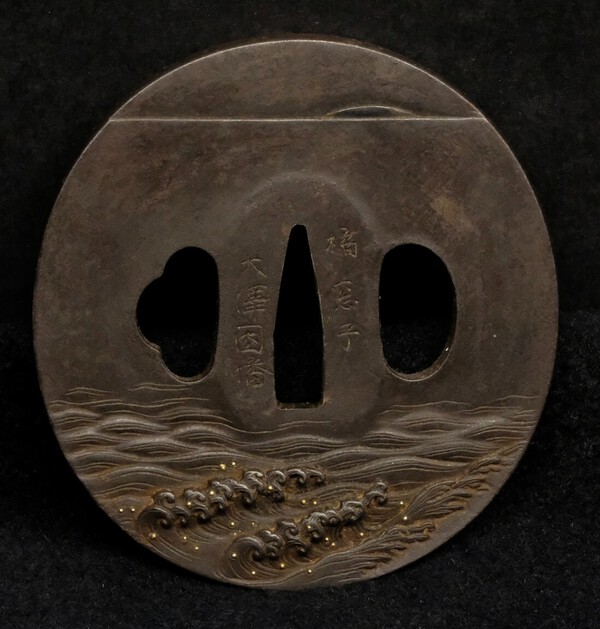

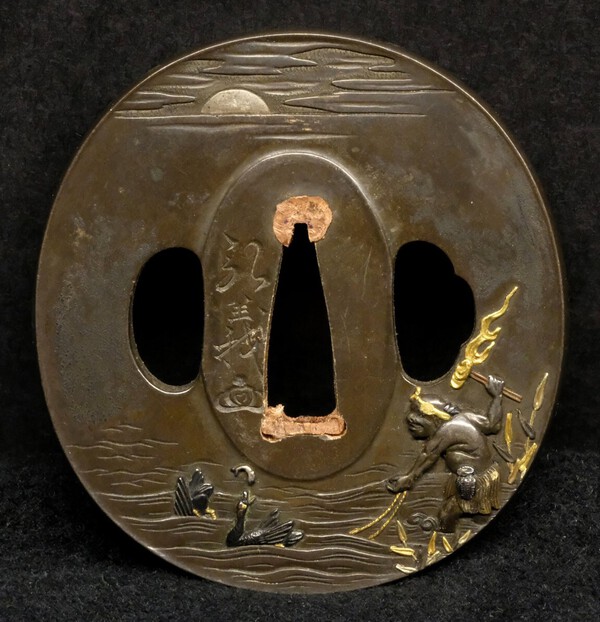
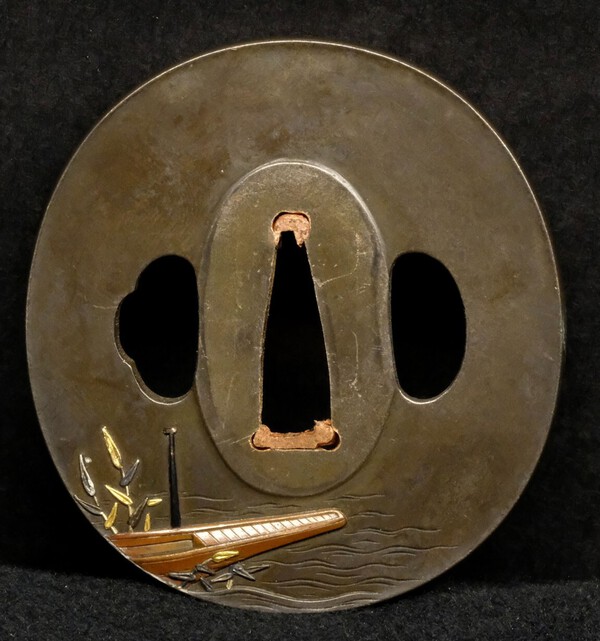
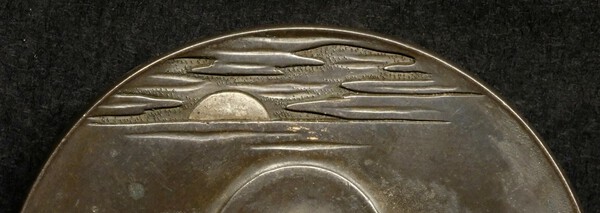
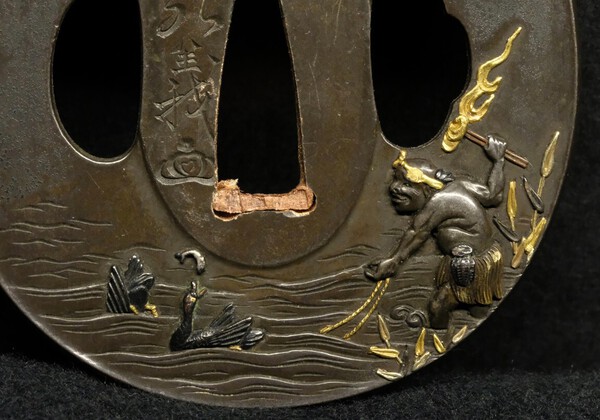




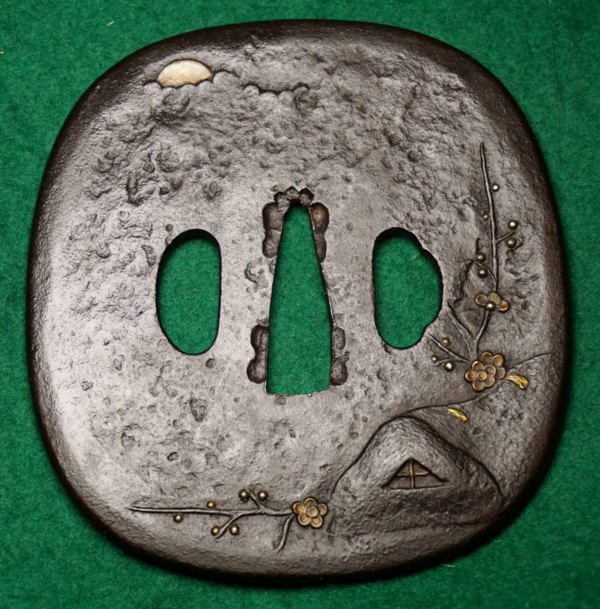

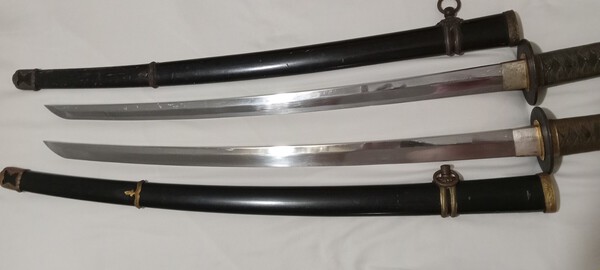
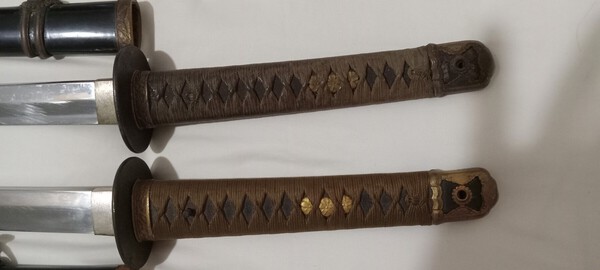
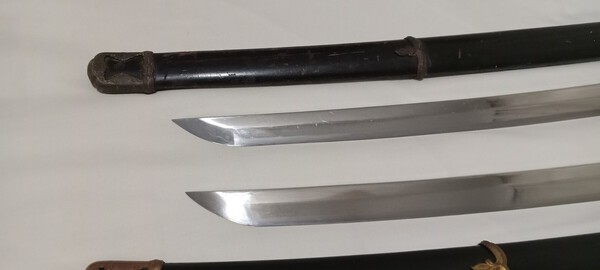

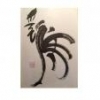



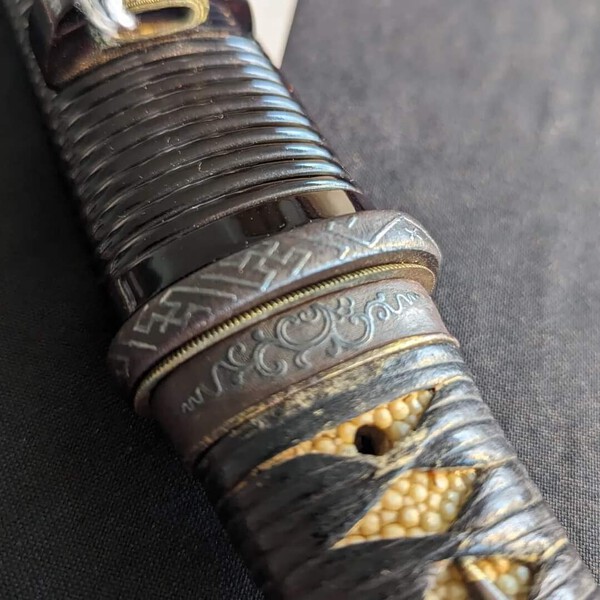
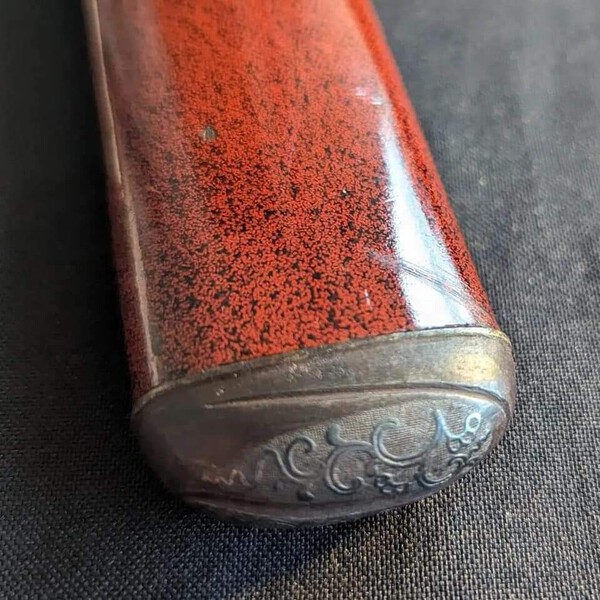
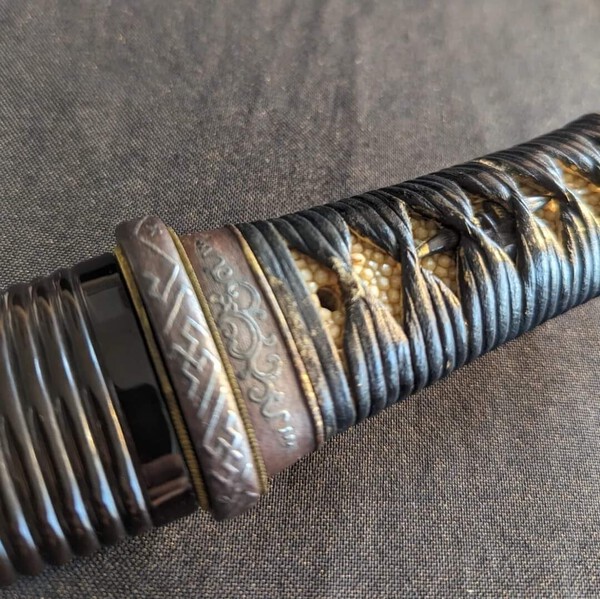
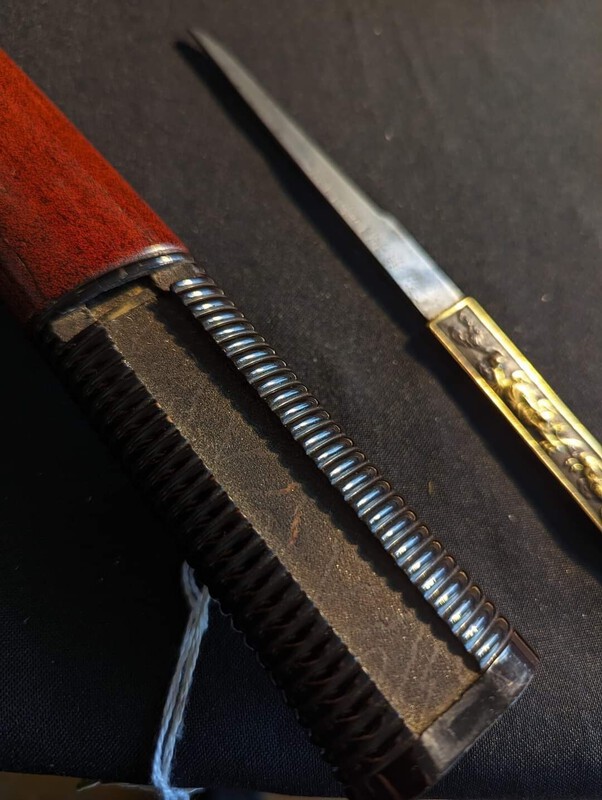
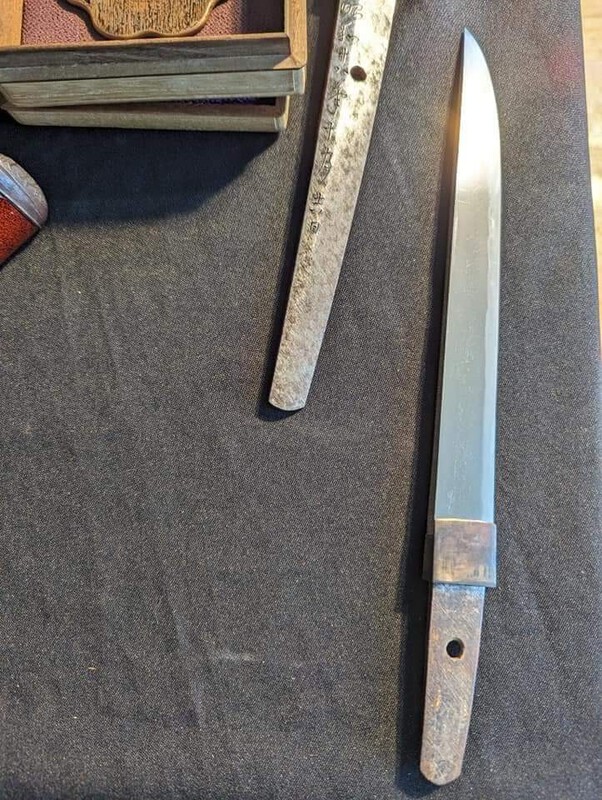
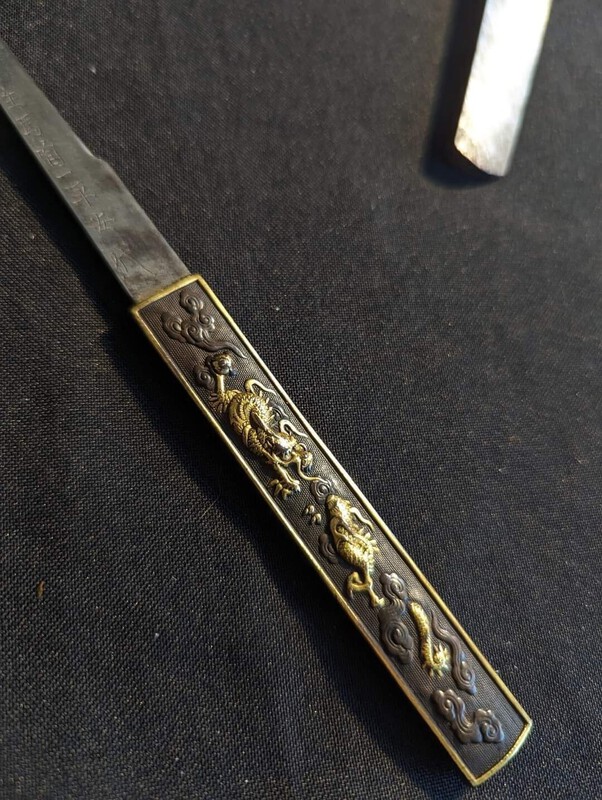
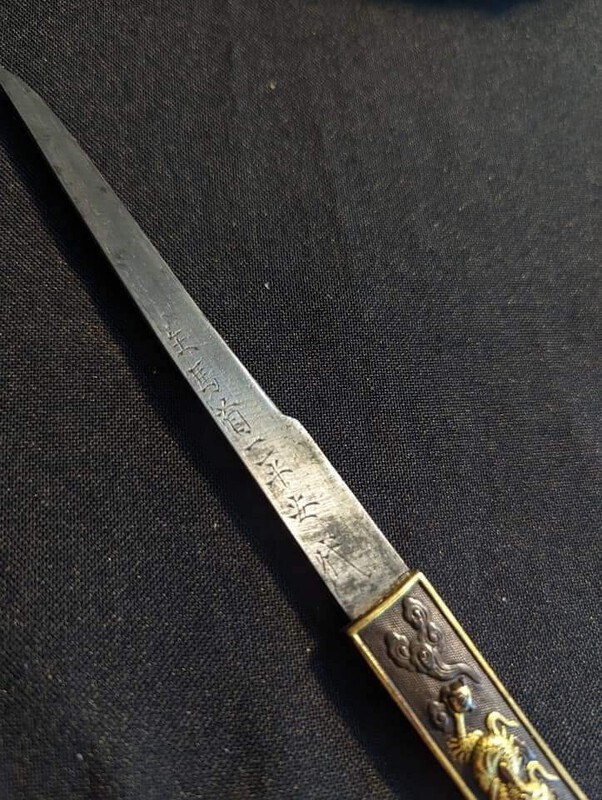
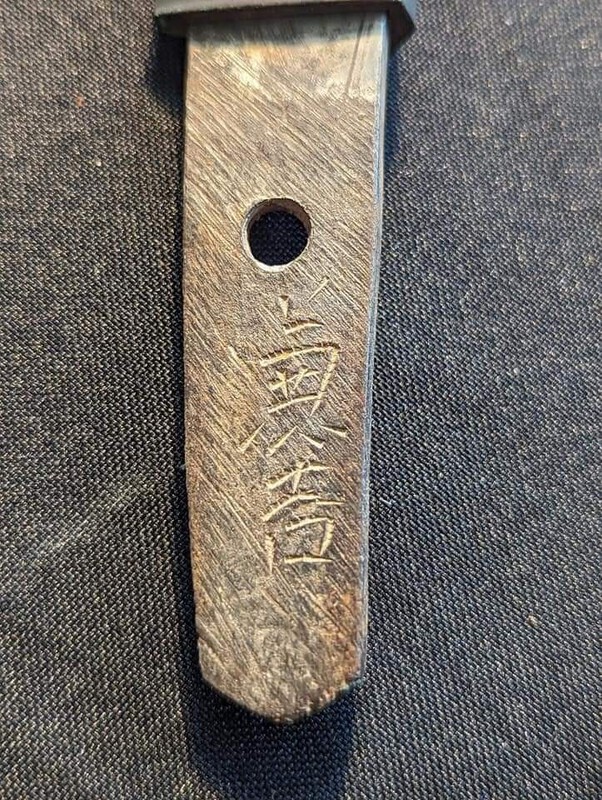
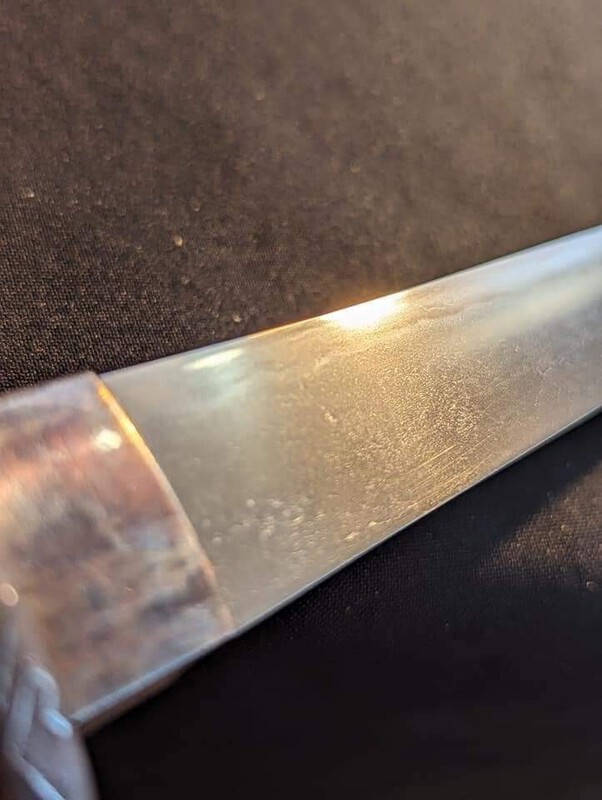
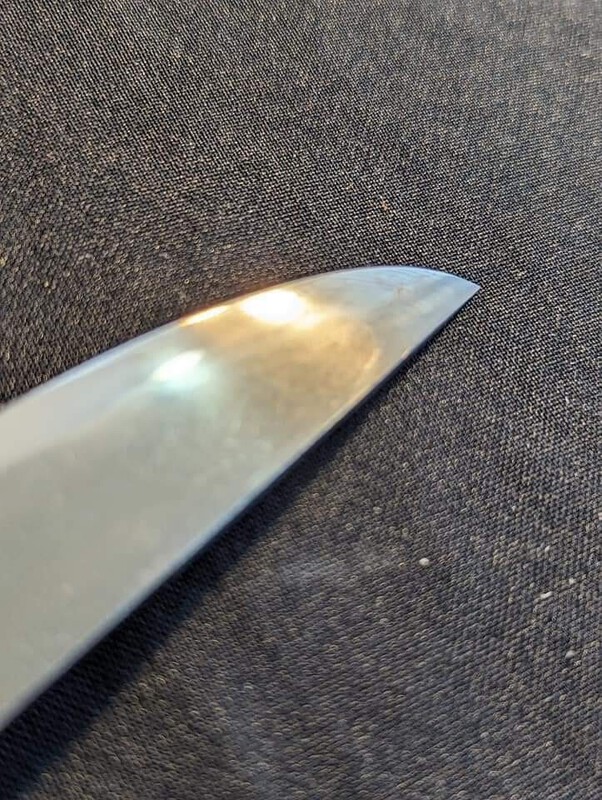
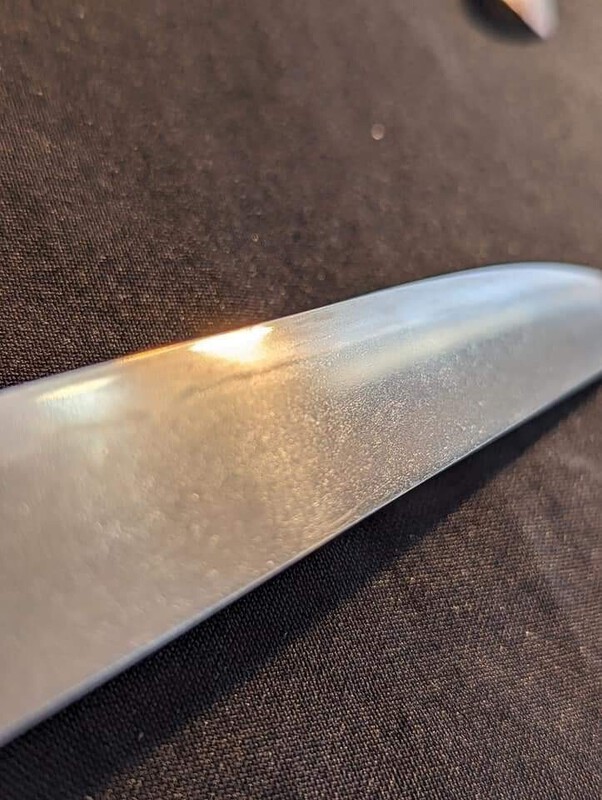
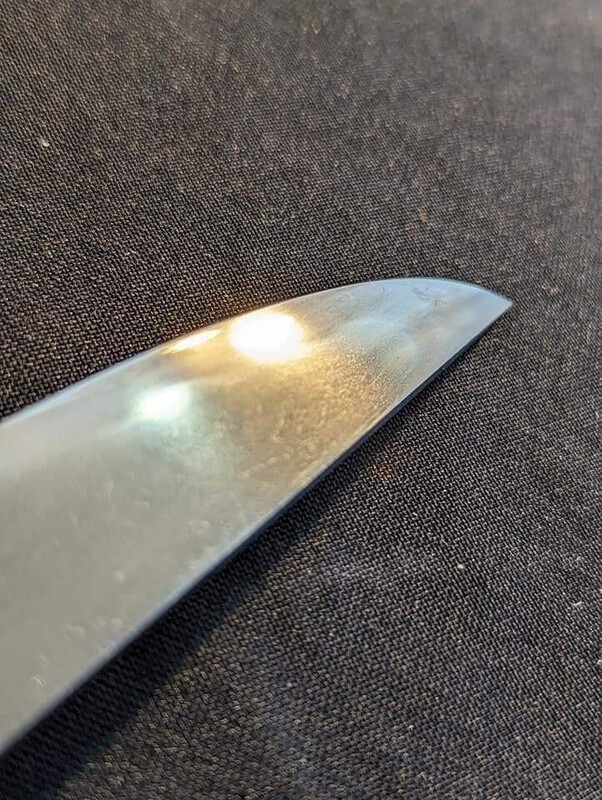
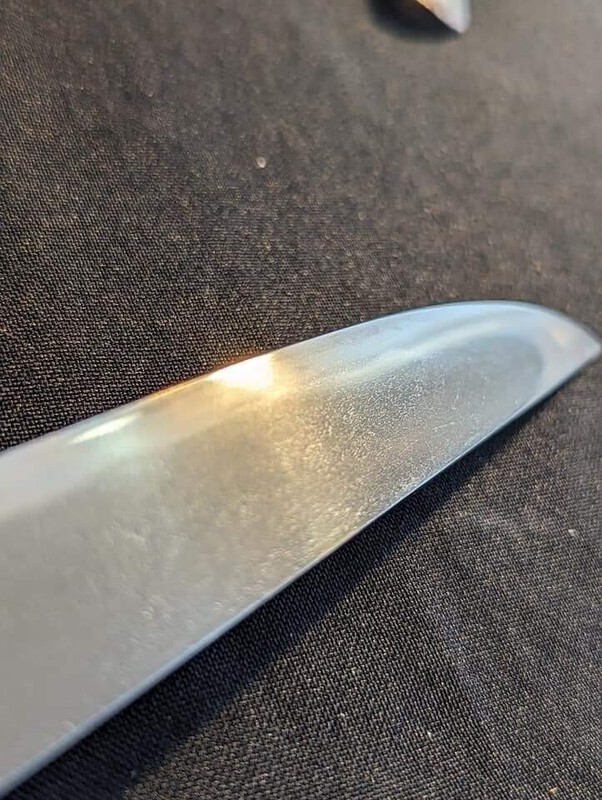
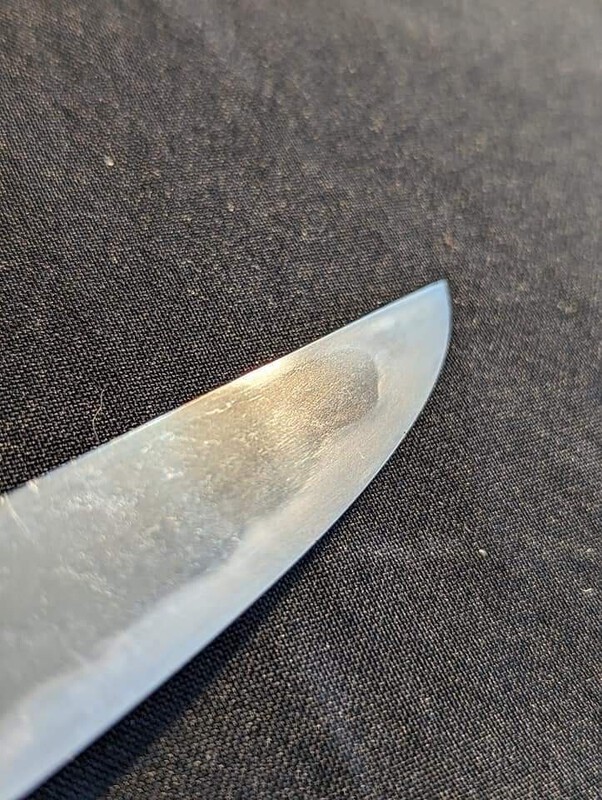
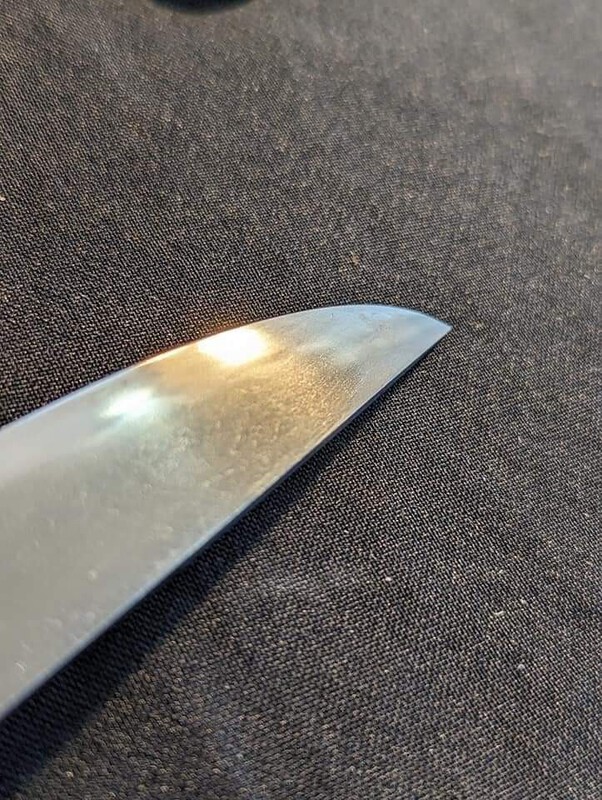
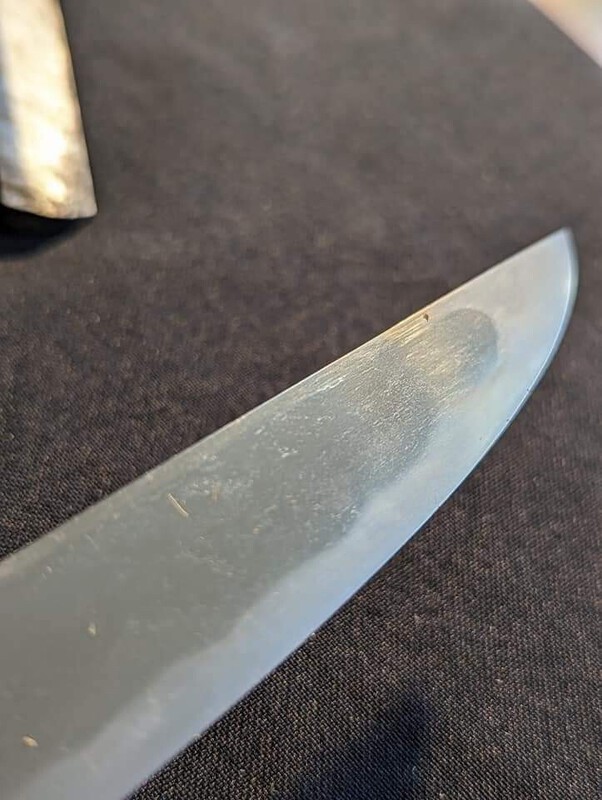
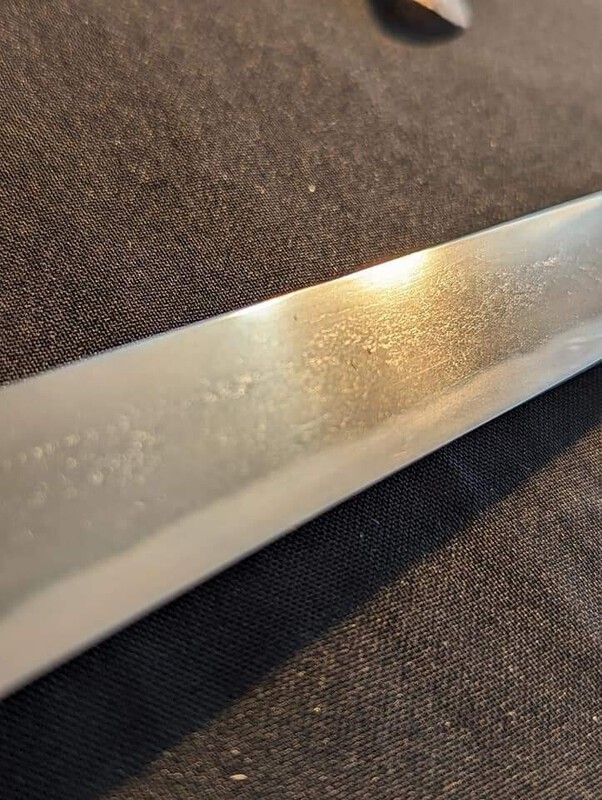
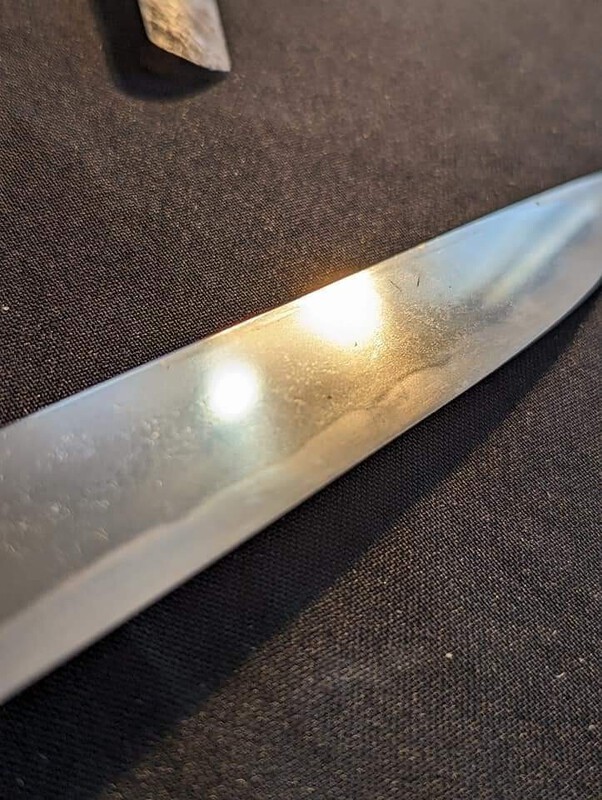
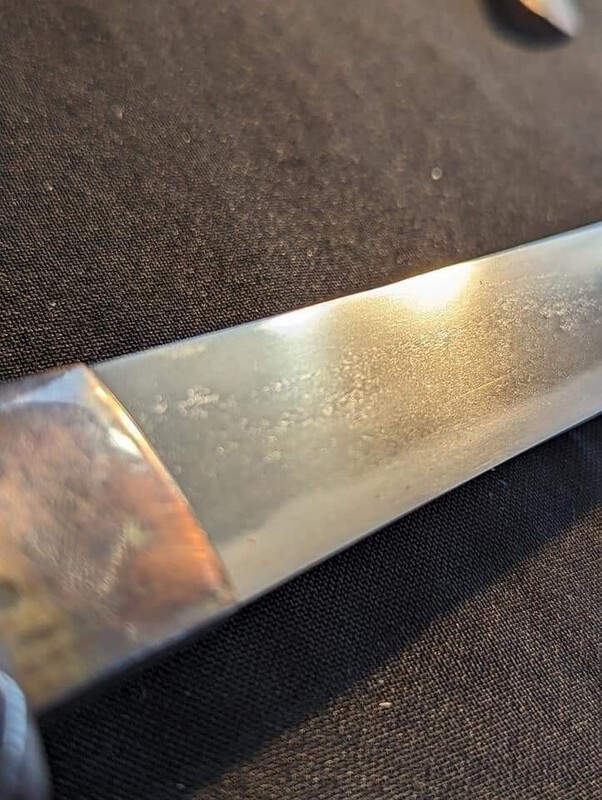
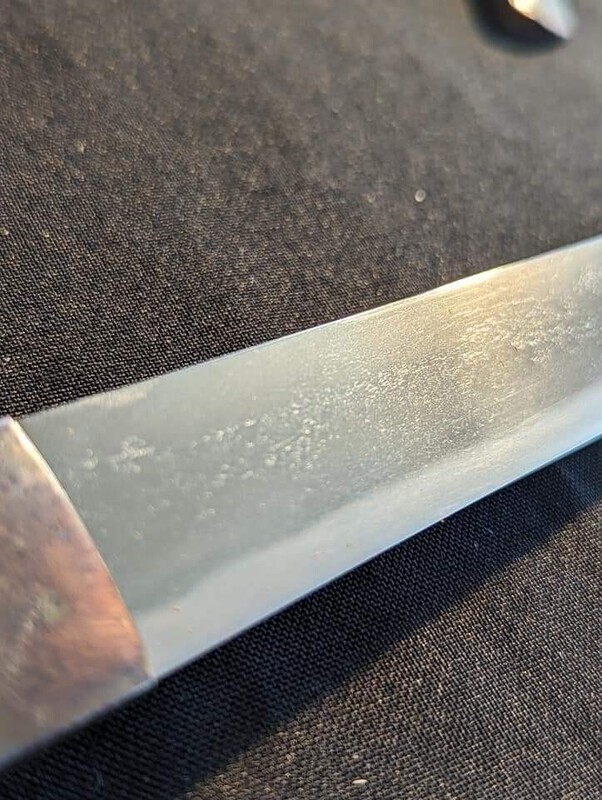
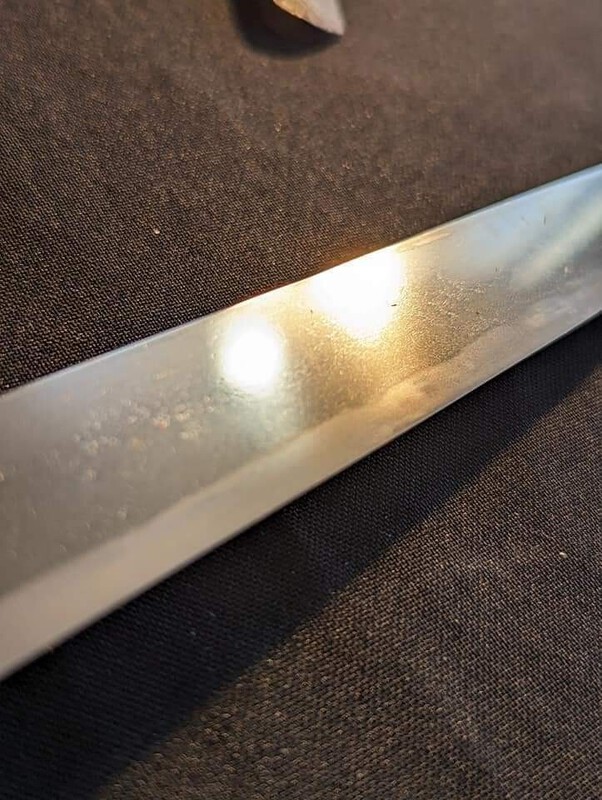
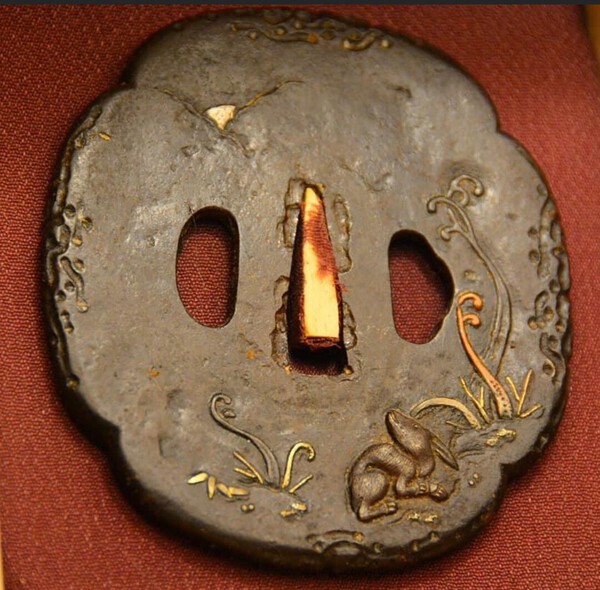


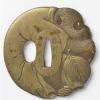
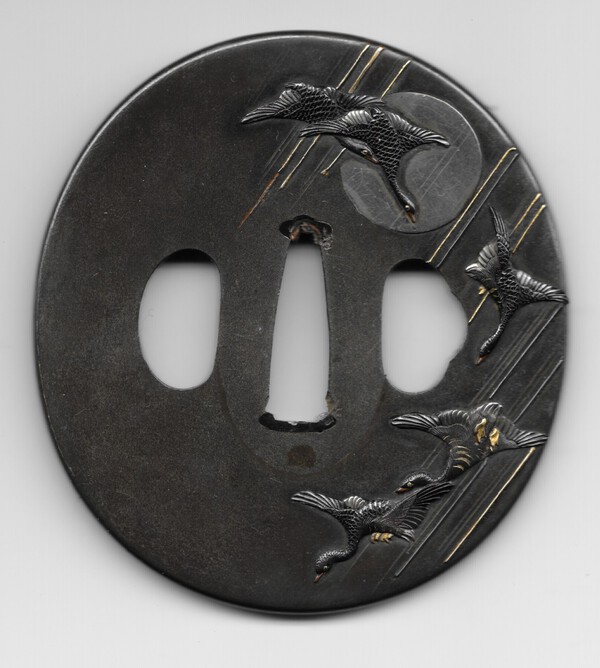
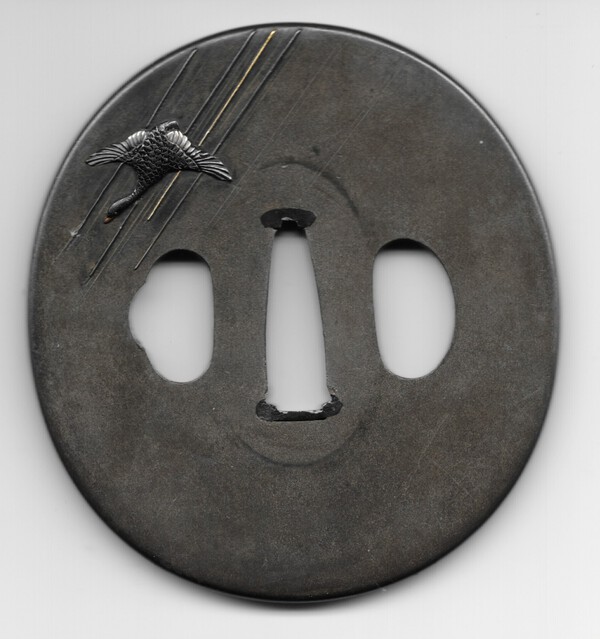

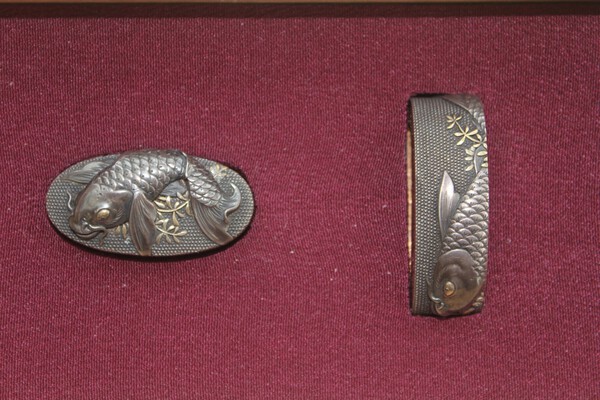
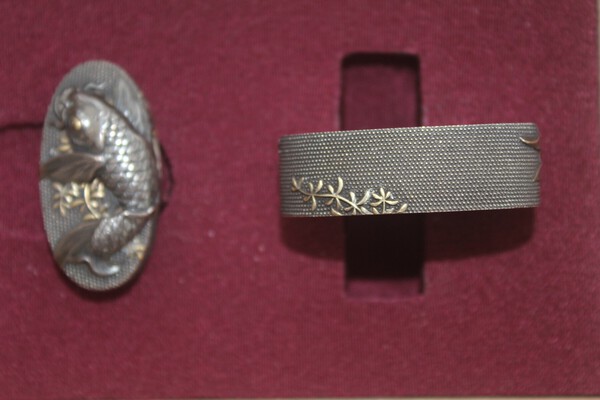
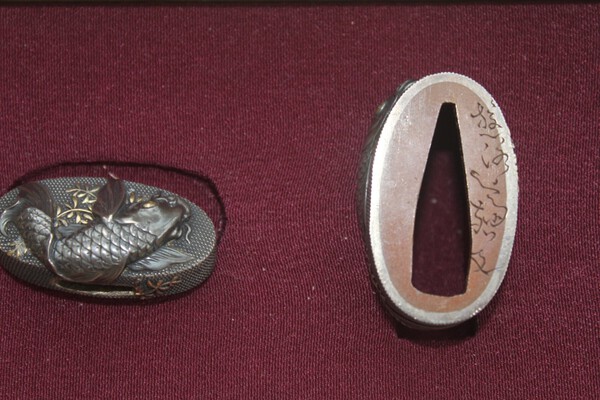

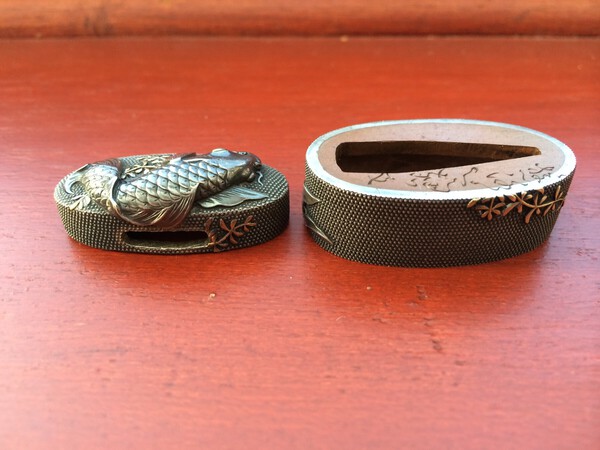
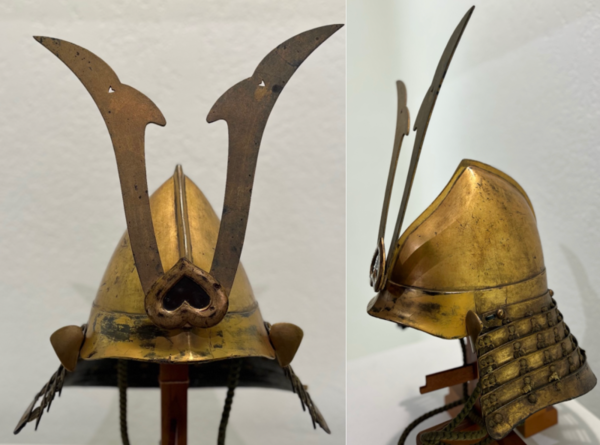
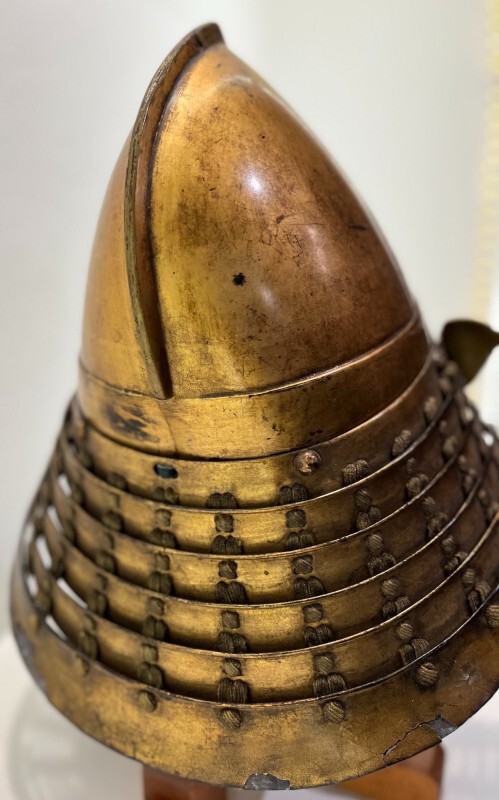
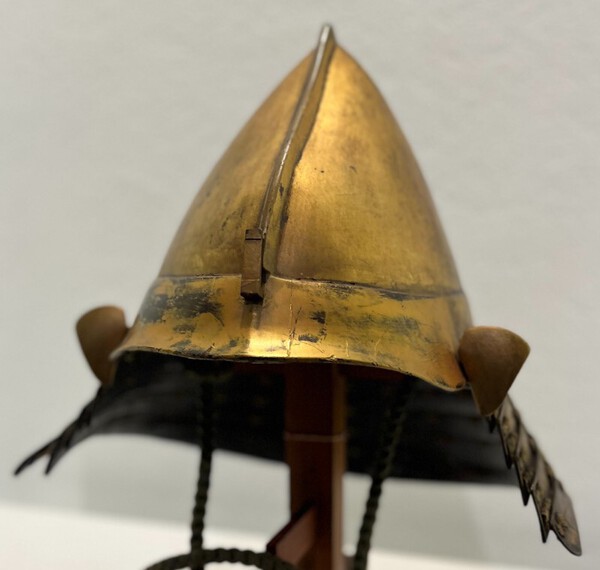
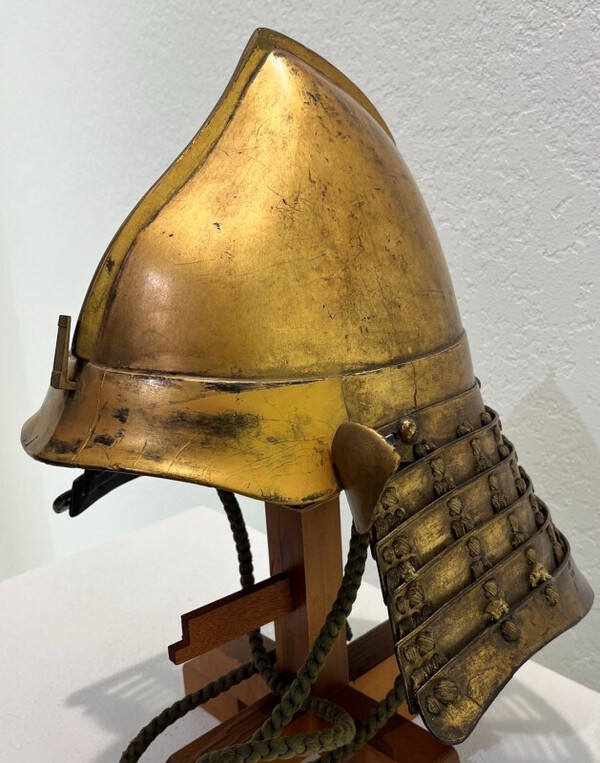
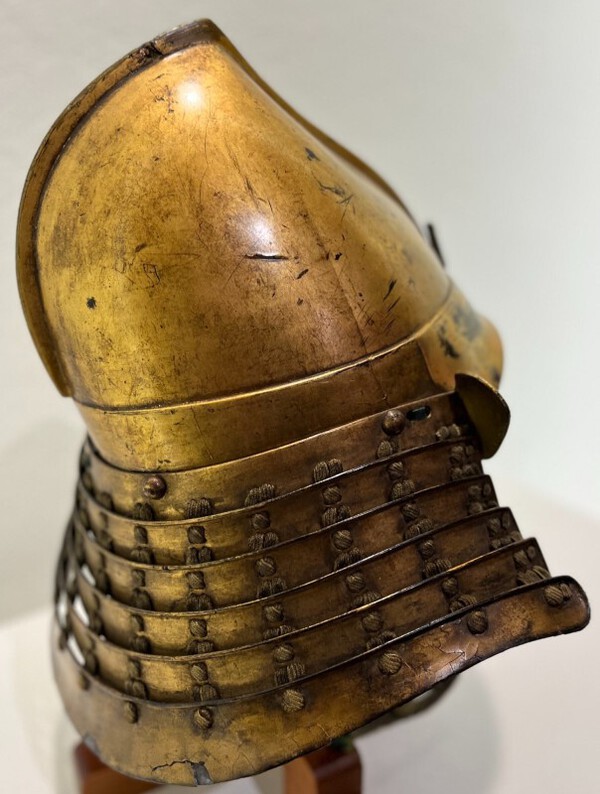


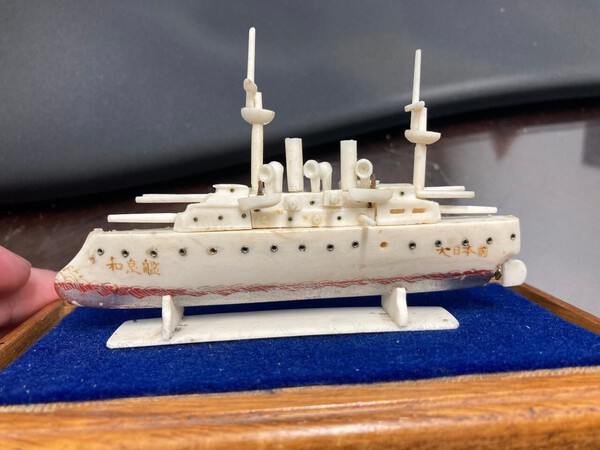

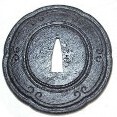
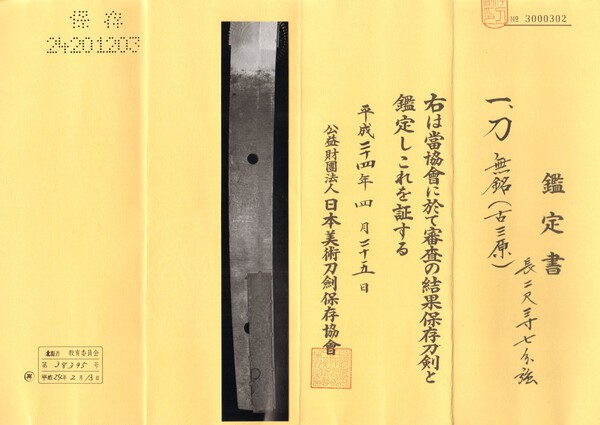
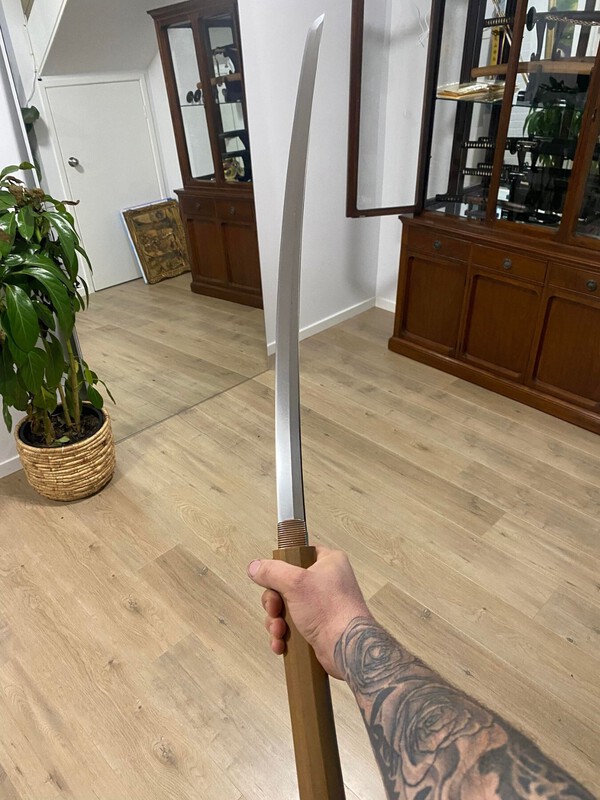
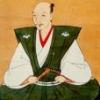
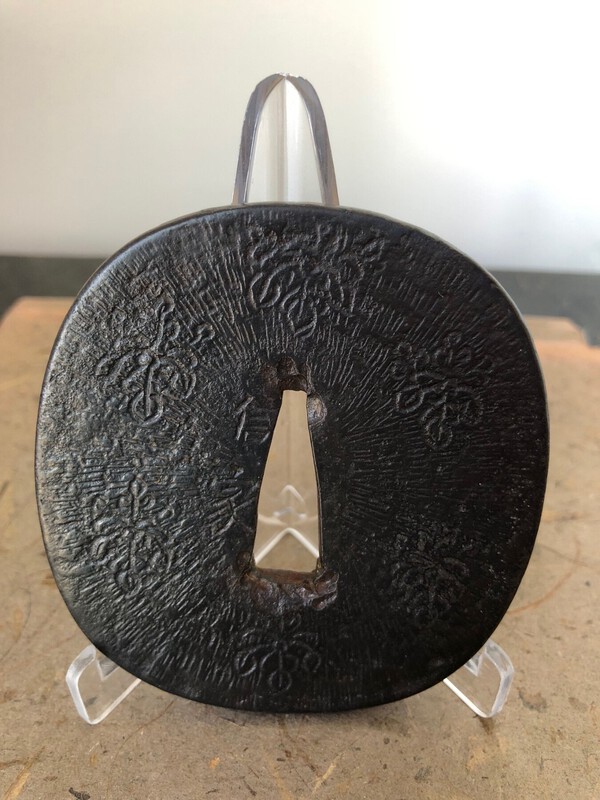
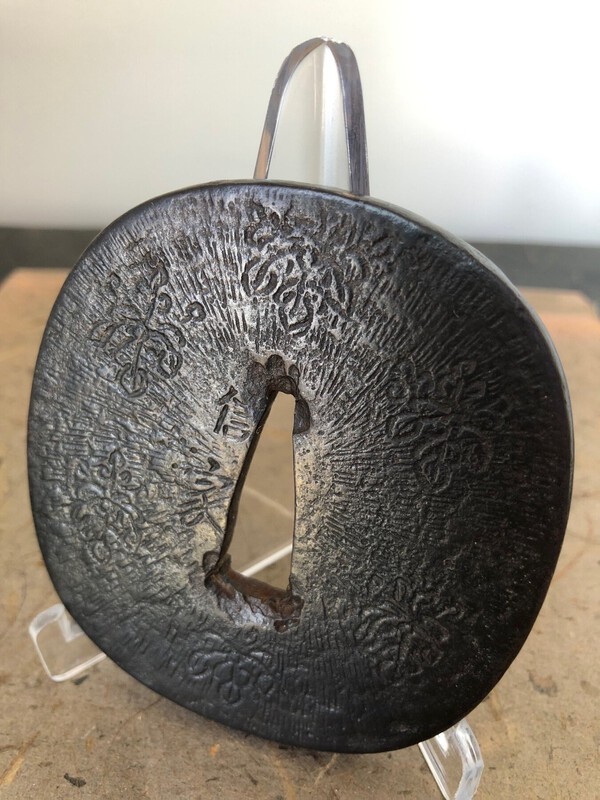
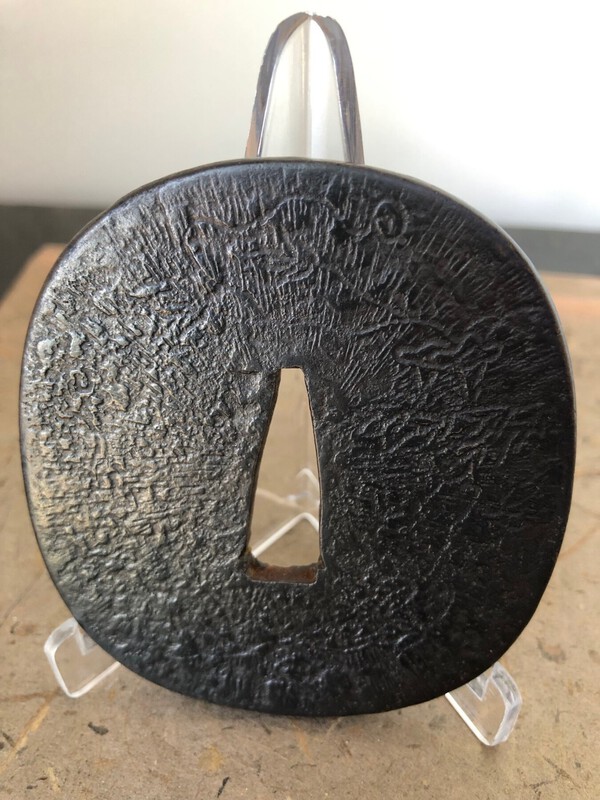
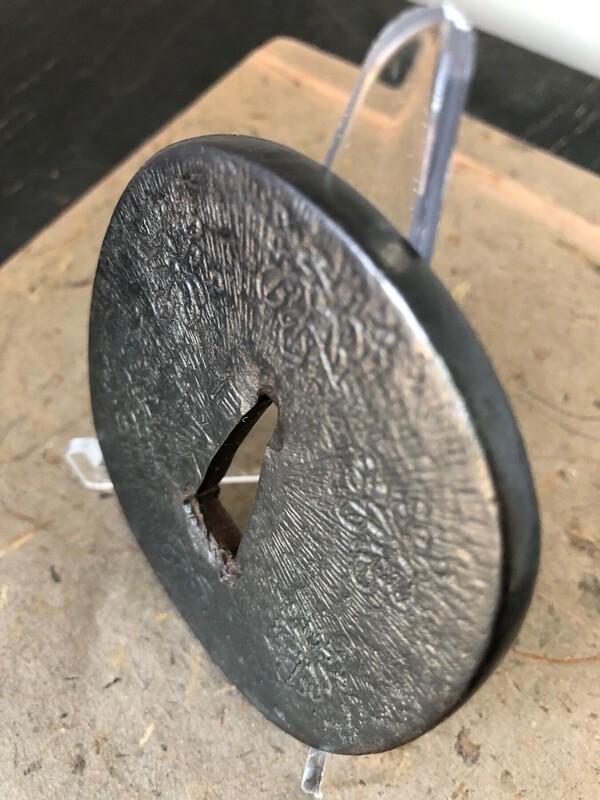
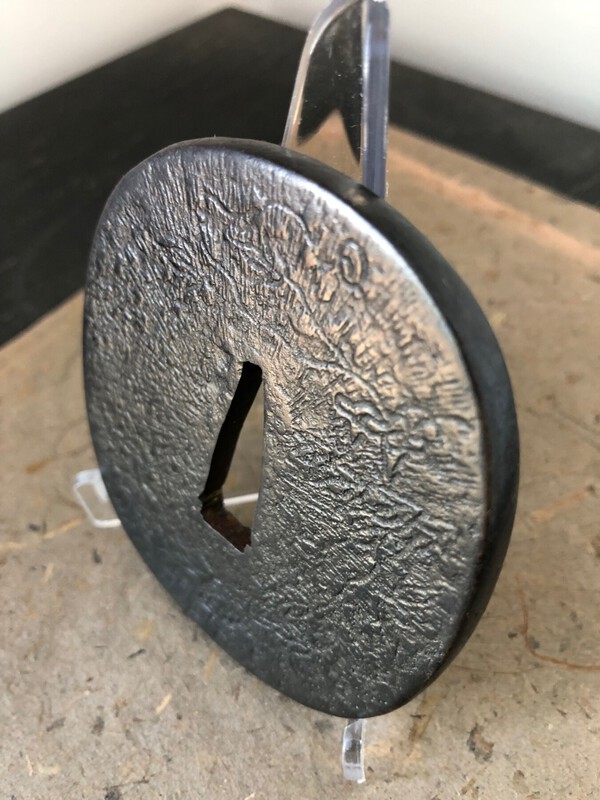
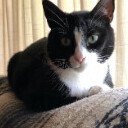

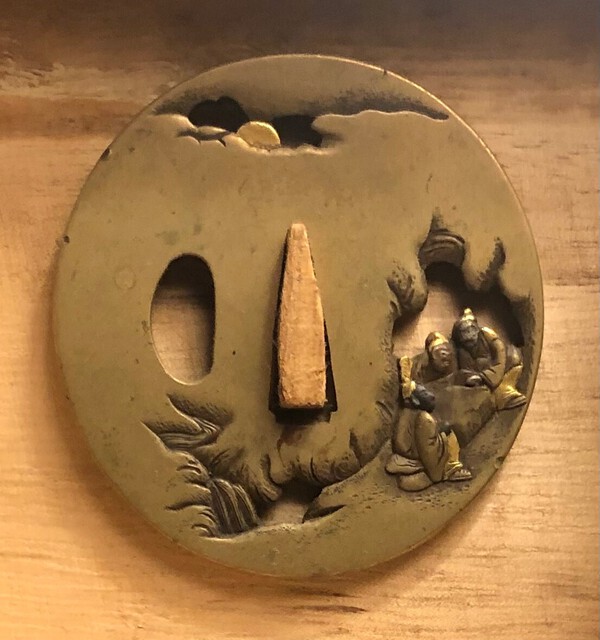
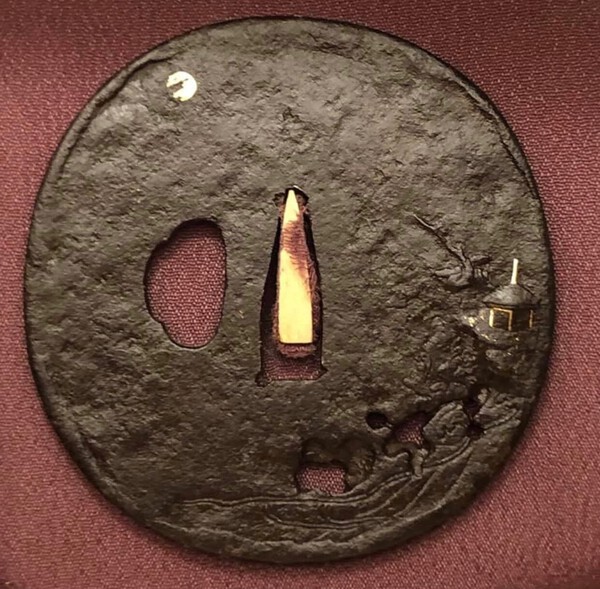
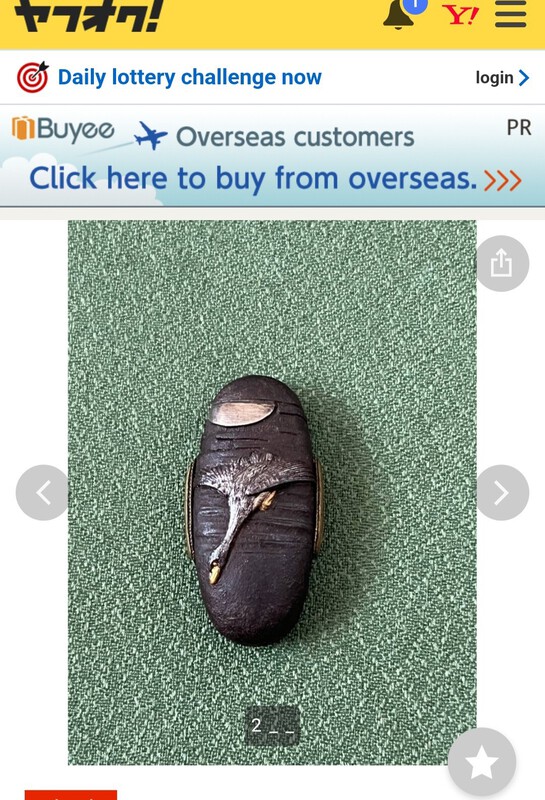
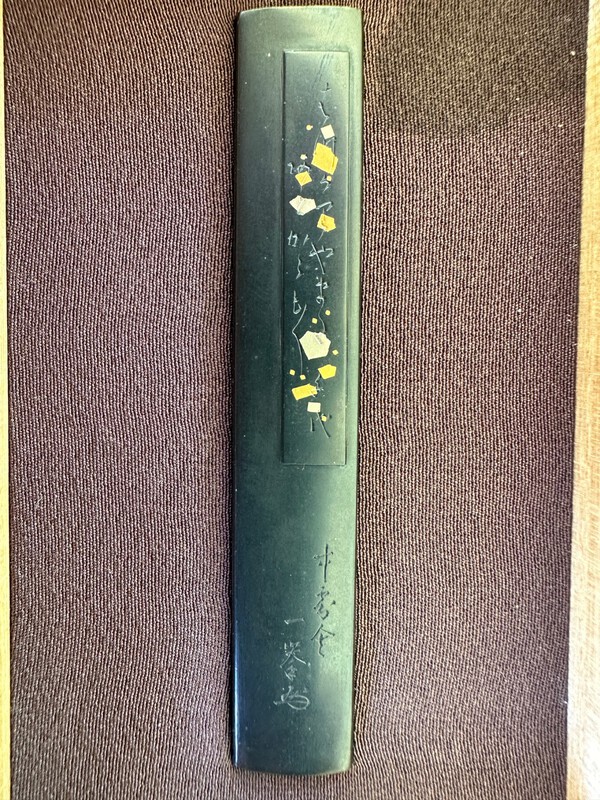
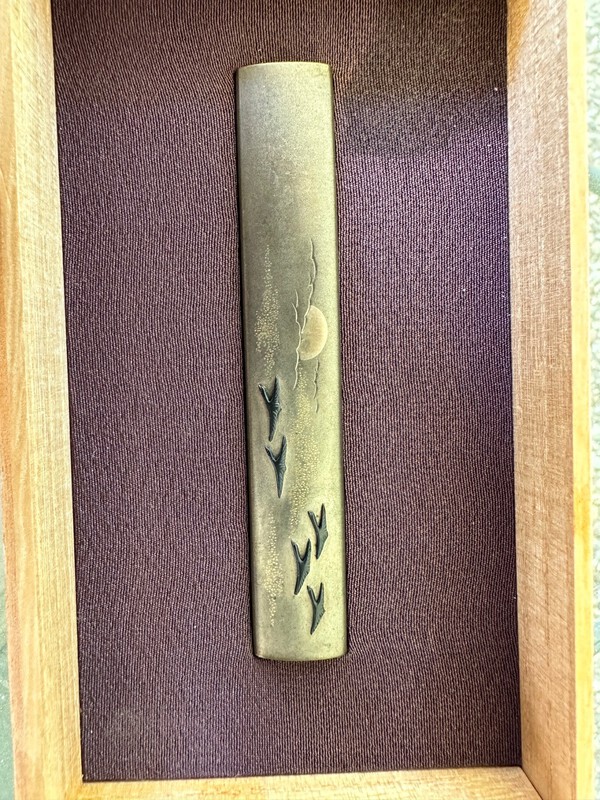
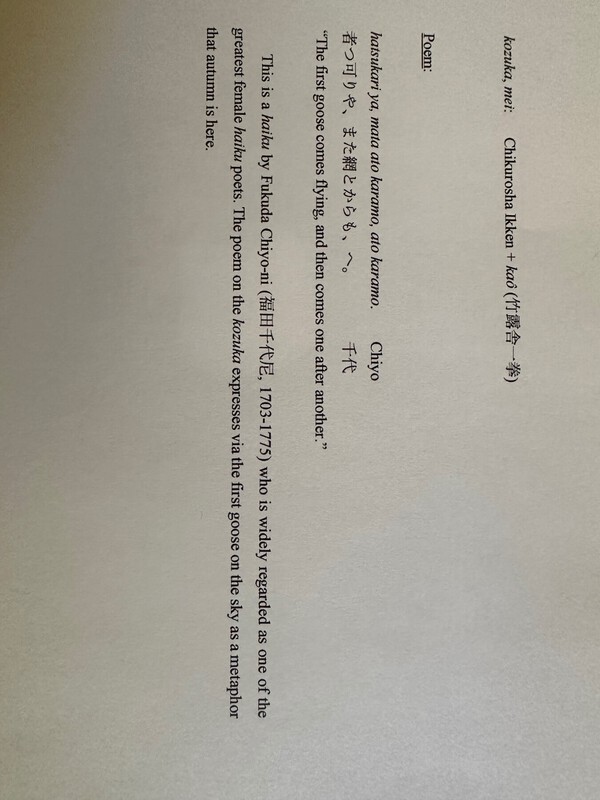
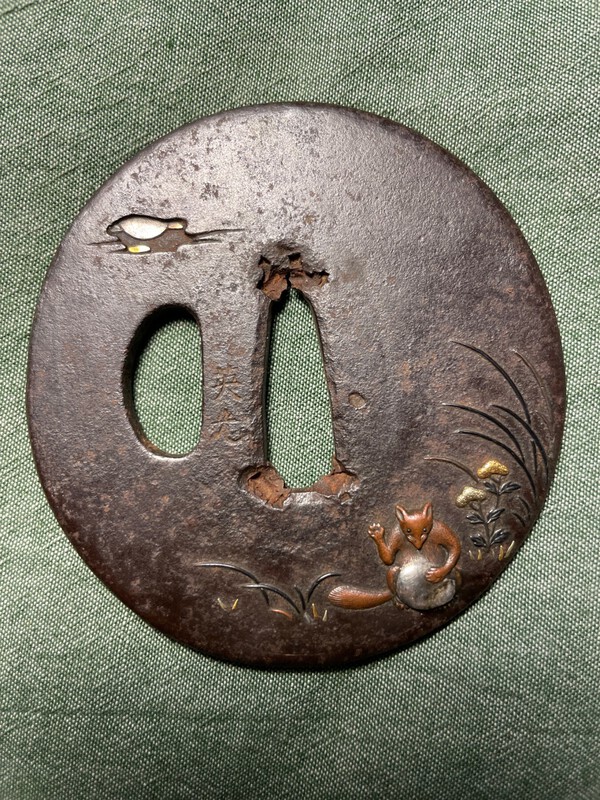
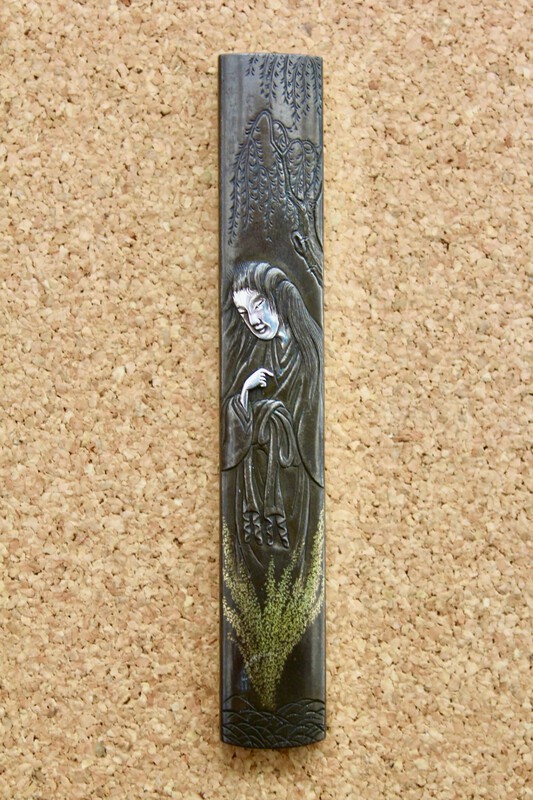
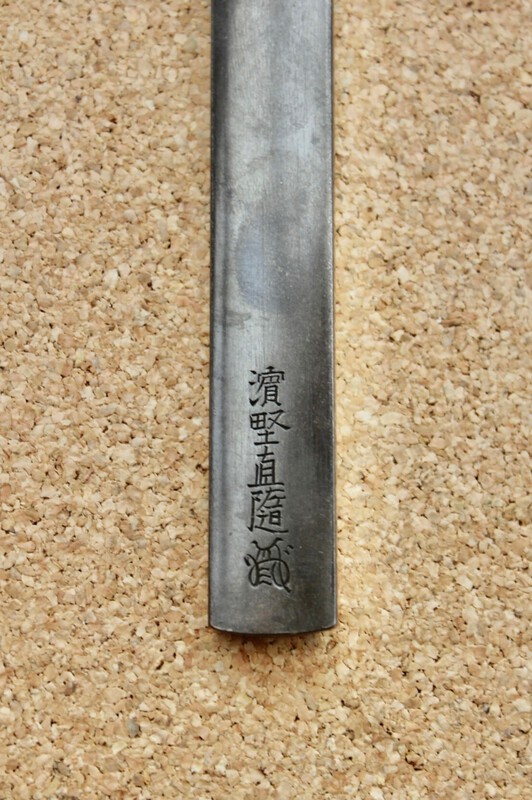
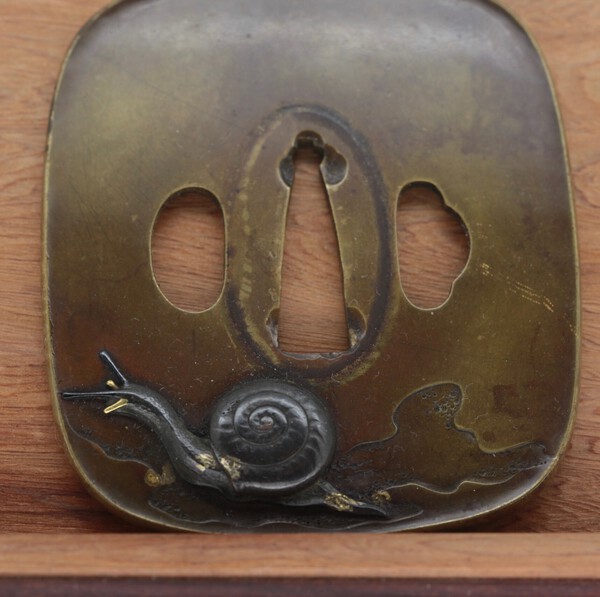
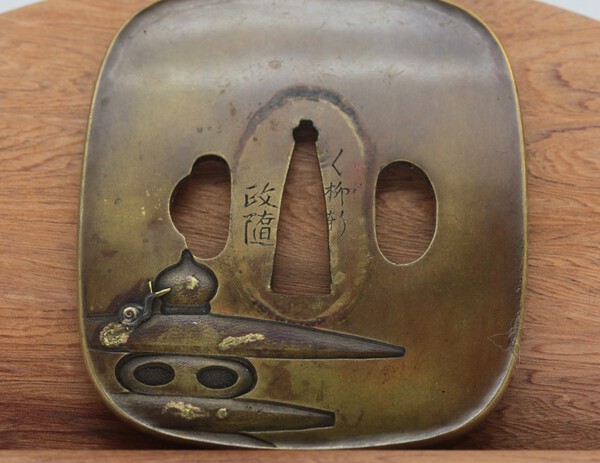
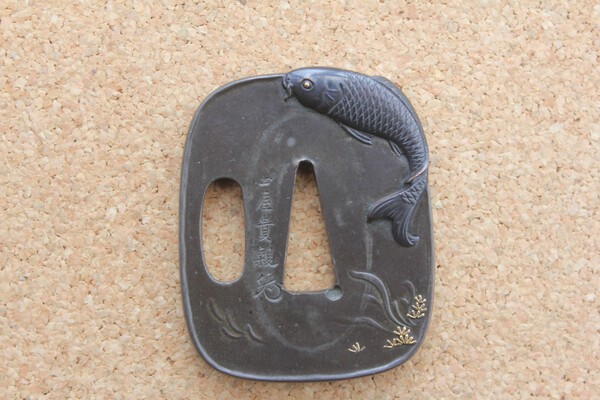
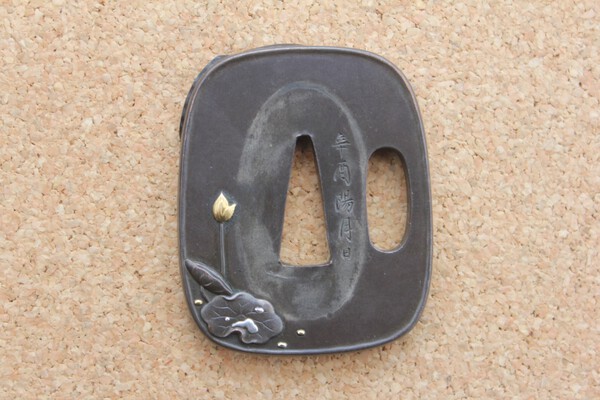
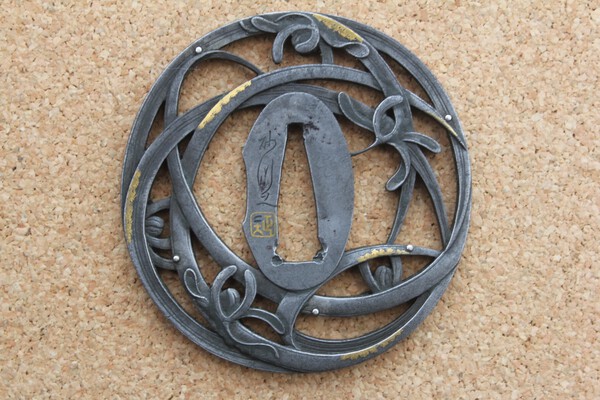
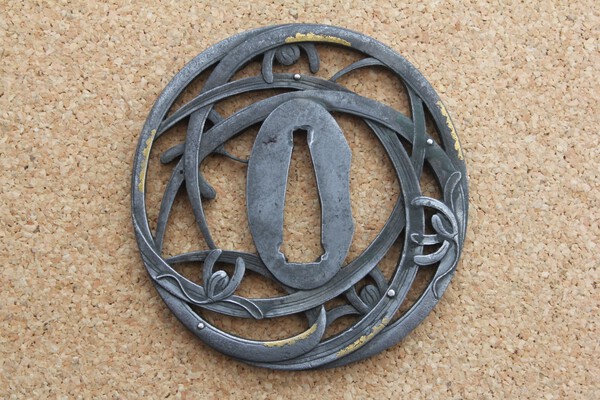
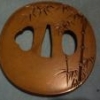
.thumb.jpg.a81969c245fbe0c4b4da3314eeae9b45.jpg)
